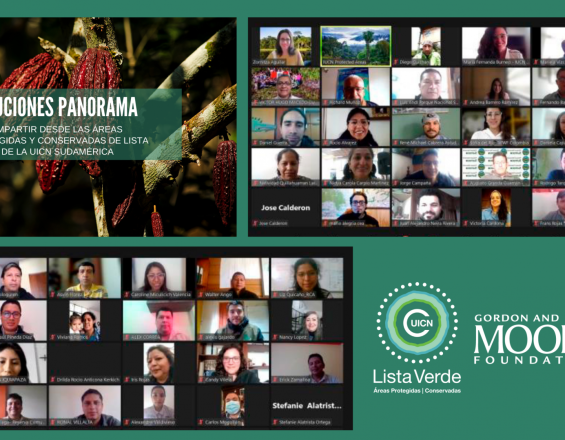On May 20th, around 80 people from various countries gathered at a regional event organized by IUCN to share inspiring solutions from Protected and Conserved Areas (PCAs). These solutions came from Areas that are currently in the certification process for the IUCN Green. The event was done within the Agenda of Biodiversity Day on May 22nd.
Staff from the protected and conserved areas of Colombia, Ecuador, Peru and Bolivia presented around 20 inspiring solutions on various topics such as shared governance, education strengthening, women empowerment, cooperative control and surveillance, rebuilding and positioning roles within territory, active citizen participation, business solutions to conservation problems, financial sustainability, local economy and revaluation of culture and ancestral knowledge, among many more.
This meeting is also a recognition to all the Protected Areas staff, for their extraordinary work and commitment. It also allows us to see the importance of communicating results using their own voice and thus finding applicable solutions to the various management problems in the management of Protected Areas, such as species trafficking, conflicts people fauna, property rights, lack of sustainable livelihoods and lack of governance, etc. Their proposals show us that the most feasible solutions are based on nature and its biodiversity.
For the IUCN Green List, developing Panorama Solutions is a fundamental requirement because it demonstrates the area's ability to find solutions to diverse problems that they face daily while also promoting these solutions in areas that might have the same issues.
We take four key ideas from the Event: (1) the importance of practical and tangible solutions; (2)the pursuit of financial sustainability for conservation, but also for the governance of protected areas and their buffer zones; (3) collaboration and cooperation as the axis of implementation; and, (4) the focus on territory with a global vision.
When thinking about a Panorama Solution, we need to look at how the solution we propose responds to a conservation problem; but above all, how it can be replicated in other contexts and landscapes to become an impact solution.
To see the whole Event please click on this link: https://fb.watch/d7KR6-wZ21/
